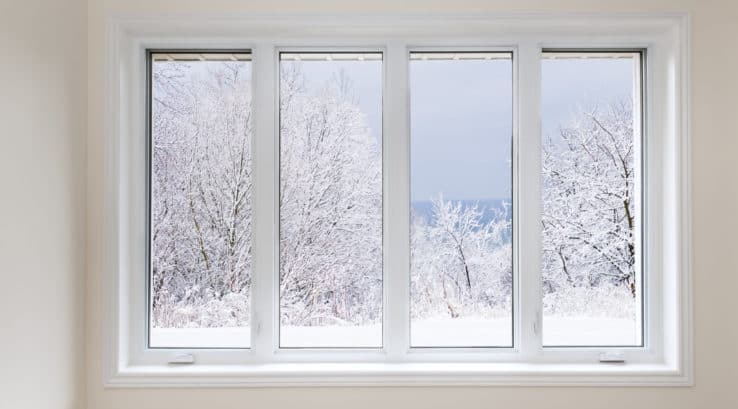You likely already know that Low-E glass can help improve the comfort and energy efficiency of your home. However, if you’re like most homeowners, you may not understand what Low-E glass is, how Low-E glass works, or what makes Low-E glass windows stand out from non-coated window glass.
What Is It Exactly?
Low-E glass is a type of glass finished with special glazing that’s invisible to the eye. The ‘E’ in Low-E stands for emissivity — the measure of how much thermal energy a surface is radiating or emitting.
Standard window glass is naturally highly emissive, which is why uncoated windows are known for causing unwanted solar heat gain during the summer, and excessive heat loss during the winter.
Low-E glass coatings are invisible to the naked eye, which means that these reflective coatings don’t interfere with the transparency of the glass.
What Is Low-E Insulated Glass Used For?
Glass insulated with a Low-E coating will increase the energy efficiency of your home. It works by minimizing the amount of ultraviolet (UV) and infrared (IR) light that passes through the glass.
We can’t see infrared light waves, but we can feel the heat that IR light carries. Because uncoated glass is highly emissive, IR waves pass easily through glass, and that’s what makes regular glass such a poor insulator against heat loss and heat gain.
Low-E glass is used to minimize the amount of unwanted heat that enters your home during the summer and keep the warm air inside during the winter. Window manufacturers apply a very thin, transparent, reflective coating to the glass during the manufacturing process to reduce the emissivity of Low-E glass windows.
And while energy efficiency is what Low-E glass windows are best known for, these windows also block UV light. Minimizing the amount of UV light that travels through your windows protects your window coverings, furnishings and floor coverings against UV damage such as fading and cracking.
How Does Low-E Glass Differ From Other Glass Coatings?
There are a number of factors that distinguish Low-E glass coatings from other types of glass coatings, such as solar film or aftermarket window tinting.
Low-E glass coating must be factory-installed between two or more panes of glass, while third-party window films can be installed after the windows are mounted. This is because the Low-E coating works by reflecting the IR waves, which carry heat, back to the source on either side of the window.
By comparison, window tinting film and spray-on window treatments block thermal energy from passing through the window, while still letting some light through. With window tint, the more efficient it is at blocking heat, the less transparent it is. On the other hand, with Low-E glass, you don’t have to choose between energy-efficiency and window transparency.
Another important difference between Low-E glass and other glass coatings is that Low-E glass is maintenance-free. Unlike with window tints and films, the Low-E coating is permanently bonded to the glass, and that means you’ll never need to re-apply it or worry about deterioration.
Learn More About Low-E Glass
To learn more about Low-E glass and why Low-E glass is a smart choice for your replacement windows, contact the window experts at Thompson Creek Window Company.


